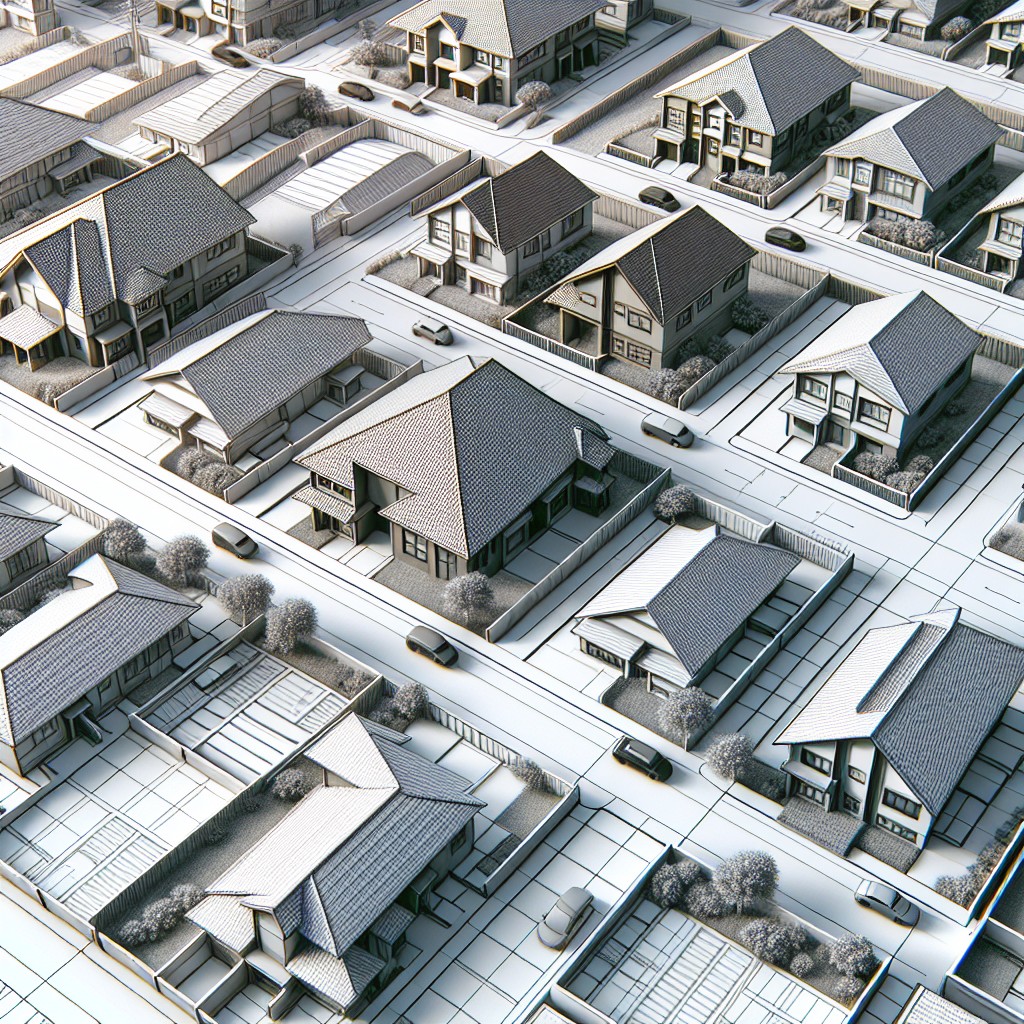Last updated on
Because understanding the price parameters is crucial when investing in a new roof, it’s essential to examine the variable costs per square foot that dictate your overall expenditure.
Key takeaways:
- The standard unit of measurement used by roofers is the “square,” which equals 100 square feet.
- Selecting the right material is crucial as it significantly impacts the cost per square of your roof.
- The angle of a roof, known as pitch, substantially influences installation complexity and thus the cost.
- The cost of roofing materials and labor can vary significantly based on where you live.
- Beyond the base price per square of roofing material, homeowners should be prepared for potential additional expenses.
Roof Size and Square Footage

Understanding how roof size and square footage impact cost is crucial. Here are key points to remember:
- The standard unit of measurement used by roofers is the “square,” which equals 100 square feet.
- To calculate the number of squares on a roof, divide the total roof area by 100.
- Roof complexity, such as the number of hips, valleys, and dormers, may increase the surface area and the number of required squares.
- Accurate measurements ensure precise material estimates, reducing waste and unexpected expenses.
Remember, accurate square footage calculations are foundational for a well-estimated roof replacement cost.
Roofing Materials

Selecting the right material is crucial as it significantly impacts the cost per square of your roof. Asphalt shingles are the most affordable, averaging between $100 and $150 per square. Metal roofing, though more costly at $120 to $900 per square, offers durability and energy efficiency. For a premium look, architectural shingles range from $150 to $550 per square, providing dimension and character.
Natural materials like wood shingles or shakes can cost between $250 and $600 per square. However, they require more maintenance. Slate roofing, which can last over 100 years, is among the most expensive options with prices from $600 to $1500 per square. Finally, for those interested in sustainable options, solar tiles are available, but at a higher price point, typically exceeding $1000 per square.
Keep in mind that these prices are materials only; installation costs are additional. Prices fluctuate based on brand, quality, and market conditions. Always request multiple quotes to ensure competitive pricing for your selected roofing material.
Roof Pitch and Features
The angle of a roof, known as pitch, substantially influences installation complexity and thus the cost. A steeper pitch necessitates more safety measures, labor, and time, which translates into higher charges. Roofs with a gentle slope can typically be re-roofed more quickly and at a reduced expense.
Roof features such as skylights, chimneys, and vent pipes also play a role in determining the overall cost. These elements require additional flashing and sealants to prevent leaks, adding complexity and time to the roofing project. Each feature may require individualized work, which can increase the cost per square.
It’s important to note that intricate roof designs with numerous valleys, hips, and ridges require additional cutting and fitting of materials. More waste is generated, which must be factored into the total material costs. The complexity of these design features can add to both the labor and material expenses, impacting the final cost per square of the roofing project.
Geographic Location
The cost of roofing materials and labor can vary significantly based on where you live. In densely populated urban areas, higher living costs often translate into steeper roofing prices due to increased labor rates. Conversely, in rural regions, prices may be lower, yet accessibility and transportation of materials can add to costs.
Certain states or regions have specific building codes or requirements that need to be met, particularly in areas prone to severe weather conditions like high winds, heavy snowfall, or hurricanes. These regulations may necessitate additional materials or construction methods, influencing the overall expense.
Local climate also dictates the choice of roofing materials. For instance, in hot Southern states, reflective roofing materials that can effectively repel sunlight and heat may be more expensive but can lead to long-term energy savings.
Furthermore, the availability of roofing contractors in an area impacts pricing. High demand and a limited number of contractors can result in higher prices. Shopping around for quotes and scheduling your project during off-peak seasons may lead to cost savings.
Additional Costs
Beyond the base price per square of roofing material, homeowners should be prepared for potential additional expenses that can affect the final cost of their new roof:
- Removal and Disposal: Stripping off old roofing materials adds to labor time and disposal costs. Typically, heavier materials like slate may increase these costs due to their weight.
- Decking Repairs: If the wooden base under the shingles is damaged, new plywood decking may be necessary, leading to higher costs for materials and installation.
- Underlayment: A water-resistant or waterproof barrier material that is installed between the roof deck and the roofing material may need to be replaced or upgraded.
- Flashing: Metal pieces used to divert water away from areas where the roof meets vertical structures, such as chimneys, will increase costs if replacements or repairs are needed.
- Ventilation: Proper attic ventilation is critical to prevent moisture build-up and extend the life of a roof. Additional vents can be an unforeseen expense.
- Gutter Replacement: Sometimes, it is necessary to replace gutters and downspouts when installing a new roof, adding to the overall cost.
- Warranties and Insurance: Opting for comprehensive warranties or dealing with insurance premiums can factor into roofing costs.
- Permits: In some areas, a building permit for roofing work is required, which can vary in price based on local regulations and the size of the project.
Roofing Contractor
Choosing a roofing contractor significantly influences your overall costs. It’s important to select a licensed and insured professional for quality assurance and peace of mind.
Experienced contractors may charge more but often provide superior workmanship and warranties. It’s advisable to collect multiple estimates to compare prices and services, keeping in mind the cheapest option is not always the best.
Verify the contractor’s references and reviews to ensure reliability and customer satisfaction. Transparent communication about costs, timelines, and materials will lead to a smoother roofing project.
Remember, investing in a reputable contractor can prevent future expenses associated with poor installation.
Factors Affecting Roof Cost in Pennsylvania
Pennsylvania’s climate necessitates roofs that can withstand seasonal extremes, from heavy snowfall to summer storms. Consequently, roofing materials must be durable, with many homeowners opting for asphalt shingles, known for their cost-effectiveness and resilience.
Urban or rural location impacts cost due to accessibility and transportation of materials. Proximity to major cities like Philadelphia or Pittsburgh might result in higher labor rates compared to more remote areas.
Historic homes, prevalent in the state, may require specialized roofing services that adhere to preservation guidelines, potentially elevating the overall expense.
State regulations and permits could influence final pricing, as adherence to building codes can necessitate additional materials or processes.
Lastly, the local labor market dictates installation costs. A high concentration of roofing contractors could foster competitive pricing, whereas fewer contractors in an area might lead to increased rates due to limited options.
DIY Vs. Professional Roof Replacement
Choosing between a DIY approach and hiring a professional service for roof replacement involves considering several critical factors.
Expertise: Roofing contractors have the knowledge and experience to tackle complex issues and unforeseen challenges that often arise during roof replacements. They are trained to handle a variety of roofing materials and understand the nuances of proper installation.
Safety: Roof replacement is a high-risk project that requires proper safety equipment and protocols. Professionals are equipped with the necessary gear and are well-versed in safety regulations to prevent accidents.
Time: Professionals can complete the job in a timely manner due to their skill and efficiency. A DIY project may extend over a longer period, potentially exposing your home to weather-related risks.
Warranty: Workmanship warranties are often provided by roofing contractors, which can protect homeowners against future problems. DIY installations typically lack this benefit and could potentially void material warranties.
Cost: While DIY might seem like a cost-saving option, unexpected expenses can arise from mistakes or lack of proper tools. Professional services provide precise estimates and can often acquire materials at better rates.
Permits and Regulations: Roofing professionals are knowledgeable about the local building codes and can ensure the replacement is up to standard, handling permits as required.
Considering these factors helps homeowners make informed decisions on whether to embark on a DIY project or invest in professional roofing services.
How to Minimize the Cost of a New Roof Installation in Pennsylvania
Choosing the most cost-effective roofing materials without compromising on quality can lead to significant savings. Opt for asphalt shingles, which are durable and less expensive than metal or slate.
Plan your installation during the offseason. Roofing contractors often offer lower rates during winter or late fall when demand is lower.
Obtain multiple quotes. Always seek detailed estimates from several reputable contractors to compare costs and services.
Consider partial replacements or repairs. If only a section of your roof is damaged, you might not need a full replacement, which could reduce your overall expenses.
Inquire about discounts. Some contractors offer discounts for seniors, military personnel, or promotional deals.
Apply for available grants or loans. Pennsylvania residents might have access to state-sponsored home improvement programs that help offset the costs.
Keep up with maintenance. Regular maintenance can extend the life of your current roof and delay the necessity for a costly replacement.
FAQ
How much does it cost to replace 1000 sq ft of roof?
The cost to replace a 1000 sq ft roof typically ranges from $4,750 to $10,000, with the majority of homeowners spending approximately $7,000 for architectural shingles installed on a cross gable roof, although the least expensive scenario involves spending $3,000 for 3-tab shingles installed on a gable roof.
How do I calculate the cost of a new roof?
To calculate the cost of a new roof, select your preferred materials, determine the cost per square foot for these materials, and multiply this by the roof’s square footage, then add any additional costs related to the roof’s slope or complexity.
Is $30,000 too much for a roof?
While $30,000 can be considerable for a roof, it is not necessarily too much, as costs are influenced by varying factors such as the size of the house and location, with costs in locations like Los Angeles reaching up to $30,000.
How much does it cost to put a square of shingles on a roof?
The cost to install a square of asphalt shingles on a roof is between $171 and $312, including both materials and labor.
What are the factors affecting the cost of roof replacement?
The cost of roof replacement is influenced by factors such as the type and quality of roofing materials, the size and pitch of the roof, the complexity of the job, the location of the property, and the rates of the roofing contractor.
How does the choice of roofing material impact the overall price?
The choice of roofing material significantly impacts the overall price as materials vary greatly in cost, with options ranging from affordable asphalt shingles to high-end slate or metal roofs.
Can geographical location significantly influence the cost of roofing?
Yes, geographic location can significantly influence the cost of roofing due to factors such as the climate, local building codes, and available roofing materials.




